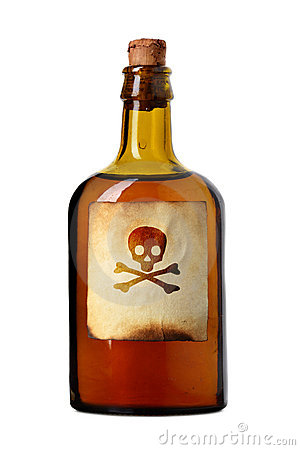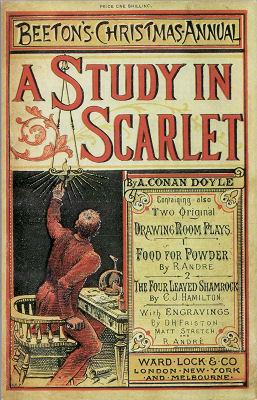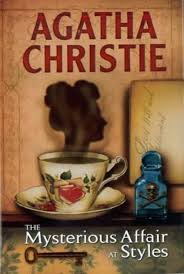Written by Madeline Kohlberg; Media by Austin Stephens
Poison is inescapable in this world. It can be found in our homes, our food, our medicine, and in the very air that we breathe. It can cure us of our diseases as easily as kill us. Today, poisoners work amongst us every day of the week, performing experiments with the goal of benefiting humanity. Yet, it is not on these miracle workers that we tend to grace with our attention. Rather, we prefer a morbid curiosity towards the minority of the population who choose to use poisons for their own devices. In short, they are the murderers in society.

From the point of view of these murderers, the perfect poison must be undetectable. Preferably it will be colorless, odorless, tasteless, and works without leaving anything behind. Or, even better, it will be an overdose of a poison that resides in a person’s environment anyway, making the death appear like an accident. In Victorian London, the sheer number of opportunities to poison your enemy was staggering. From domestic ingredients in the kitchen to cosmetics on the bathroom shelf, it was almost easier to wait for your victim to accidentally kill themselves from the cyanide in their almond extract or the arsenic in their facial treatments.
Anywhere that has poison in such high quantities will house people who are interested in the study of such substances. Some will be interested in the discovery of new poisons, and others will claim an interest in counteracting them. Regardless of the real reason behind their studies, people have always found the study of toxicology to be fascinating. Mythologized and even romanticized, toxicology finds its way into mystery fiction from the Victorian period in many ways, the most famous being the works of Sir Arthur Conan Doyle.

A physician himself, Doyle’s works view poisons in a different light than works that would come later, most notably the works of Agatha Christie. Doyle’s most famous character, Sherlock Holmes, was a toxicology aficionado. Indeed, the first time that we see him, he is bent over his workbench, hard at work on an experiment to prove his point in a particularly sticky case. Holmes was no stranger to chemistry as a science, and Watson as the narrator of the original stories makes that very clear. While he was still a student, Holmes spent his breaks with an organic chemistry book and an experiment table. Once he moved to Baker Street, the chemistry table followed him, prompting him to complete more experiments, the odors driving his poor flatmate off the premises on at least one occasion. It’s quite a shame that not more cases were solved by chemical means, but there is still a chemical standpoint in nearly every one of the sixty published stories.
Doyle was at the forefront of the chemical forensics movement, a field that required a great deal of poison on its own. He gave Holmes his own important part to play as well, though, amusingly, there are quite a few instances of Holmes making mistakes that simply shouldn’t have been made at the time. Instances of a poison that doesn’t really make any sense, a study that had already been made many years before, and a healthy disregard for real snake venom make the stories an interesting read, for there seems no reason for a physician like Doyle to make the mistakes that he did. Poison as a murder weapon was not widely used in the Holmes books; he much preferred more “hands on” methods, although the poisons did often come into play in the aftermath.

Building on this work, Agatha Christie took many of the aspects that made Sherlock Holmes stories what they were and turned them on their head to create her own books. In the midst of the first World War, the story goes that a young Englishwoman received a challenge from her sister, the result being a tale that launched the career of the world’s most successful mystery novelist. The challenge was to create a mystery in which the true villain was impossible to guess. Her first novel, The Mysterious Affair at Styles, is an interesting example of how her work was deliberately different from that of Doyle. From making her detective, Hercule Poirot, the exact physical opposite of Sherlock Holmes to the way that toxicology was very much an aspect of the entire story, this was a story that was something entirely new.
Her use of strychnine as a murder weapon (a poison that would go on to be a member of a trio of poisons that were Christie’s preferred weapons, the other two being arsenic and cyanide) was skillfully done. Where Doyle was a physician, Christie was a dispenser, similar to the American pharmacist. Strychnine is an alkaloid, found as a naturally occurring poison in the plants of the Strychnos family. It is a neurotoxin that interferes with the motor neurons that control muscles. At lethal doses, result is a constant barrage of signaling that results in muscle contractions. The victim will die of either asphyxiation or sheer exhaustion from the violence of the convulsions. Rigor mortis will set in immediately, and the poison can sometimes be mistaken for tetanus. Styles was published in 1920, long before the chemistry and mechanism of strychnine were known to the scientific community. Whether or not the actual chemical reaction was known, strychnine had a long reputation as a rat poison that went back to the seventeenth century. In fact, it was often prescribed as a stimulant in low doses for people with flagging energy, similar to caffeine.
It’s clear that Christie had intricate knowledge of her poisons, and it is interesting to consider that the forensic side of a detective story rarely featured in her stories. Her detectives focused their energy on a more human aspect of their cases, whereas Holmes’ strength was in his powers of observation, deduction, and chemical knowledge. Sir Arthur Conan Doyle and Agatha Christie’s work can be compared and contrasted in many fascinating ways; their use of toxicology is only one. Both authors are the result of building on the genius of others, creating something entirely new in both cases. Doyle built on the work of Edgar Allen Poe; Christie built on the work of Doyle. Mystery fiction is a genre that still continues to evolve today. Modern mystery stories are different from their older, Victorian beginnings, but that’s the way that it should be. It is a perfect example of how literature changes, and how those changes come to pass.




























